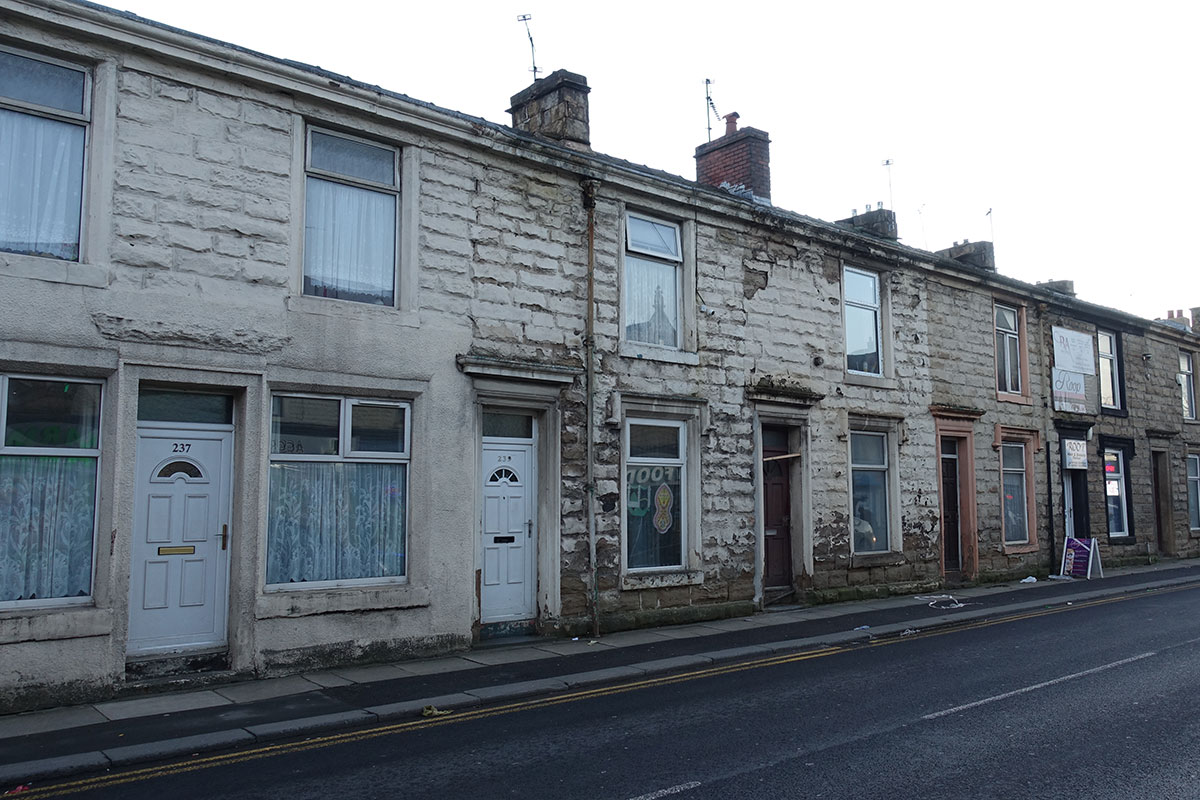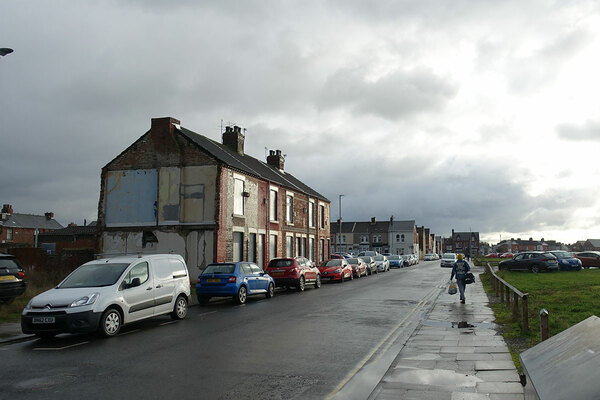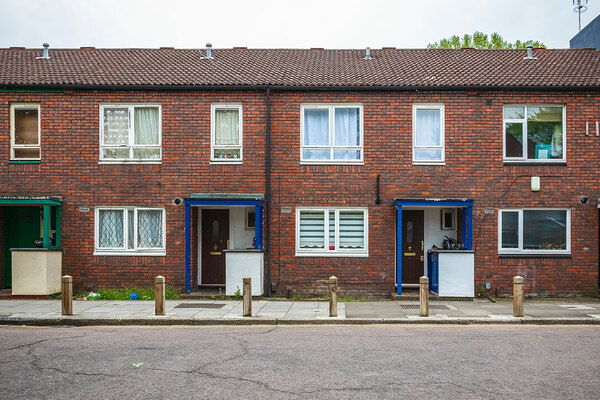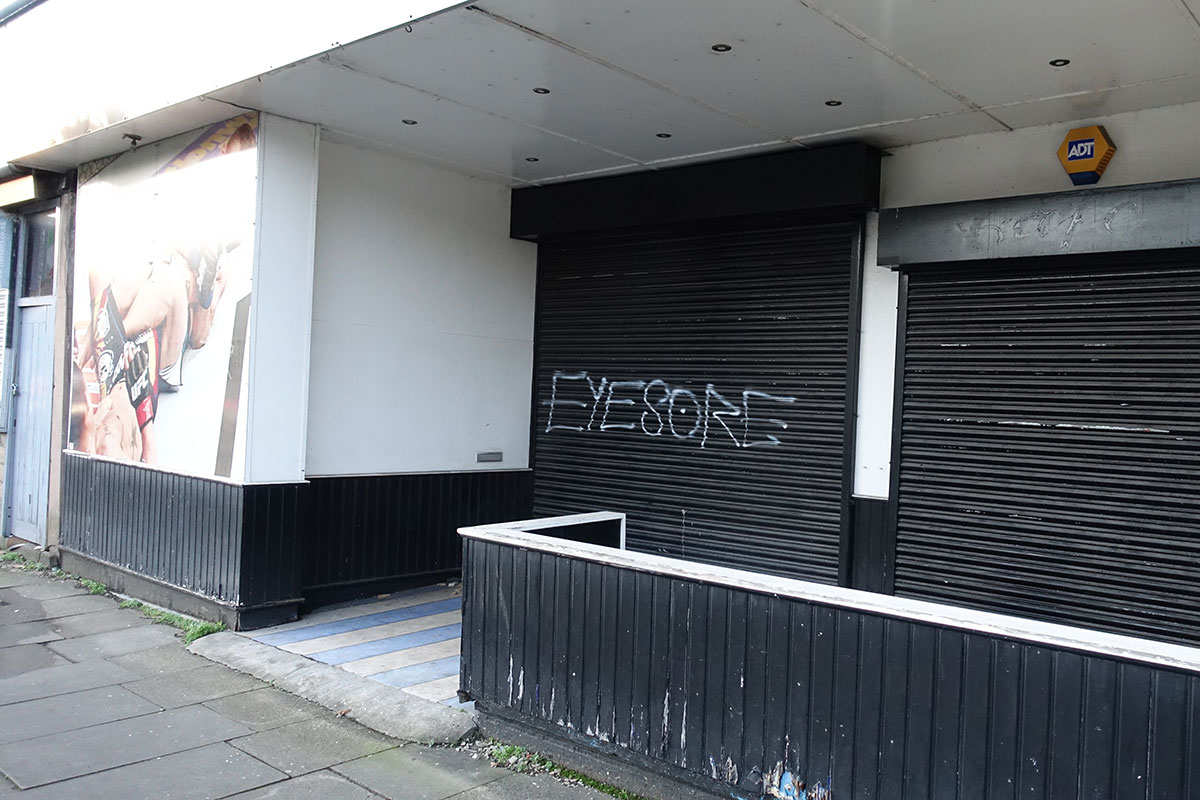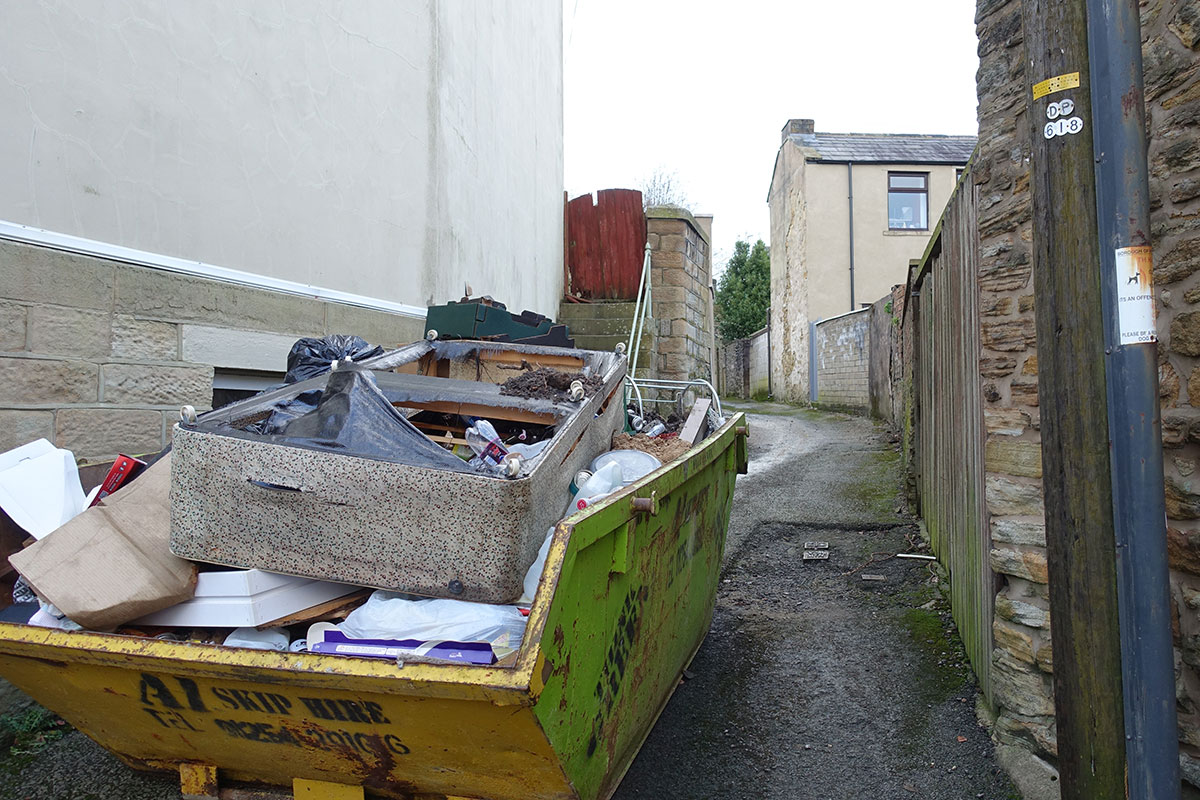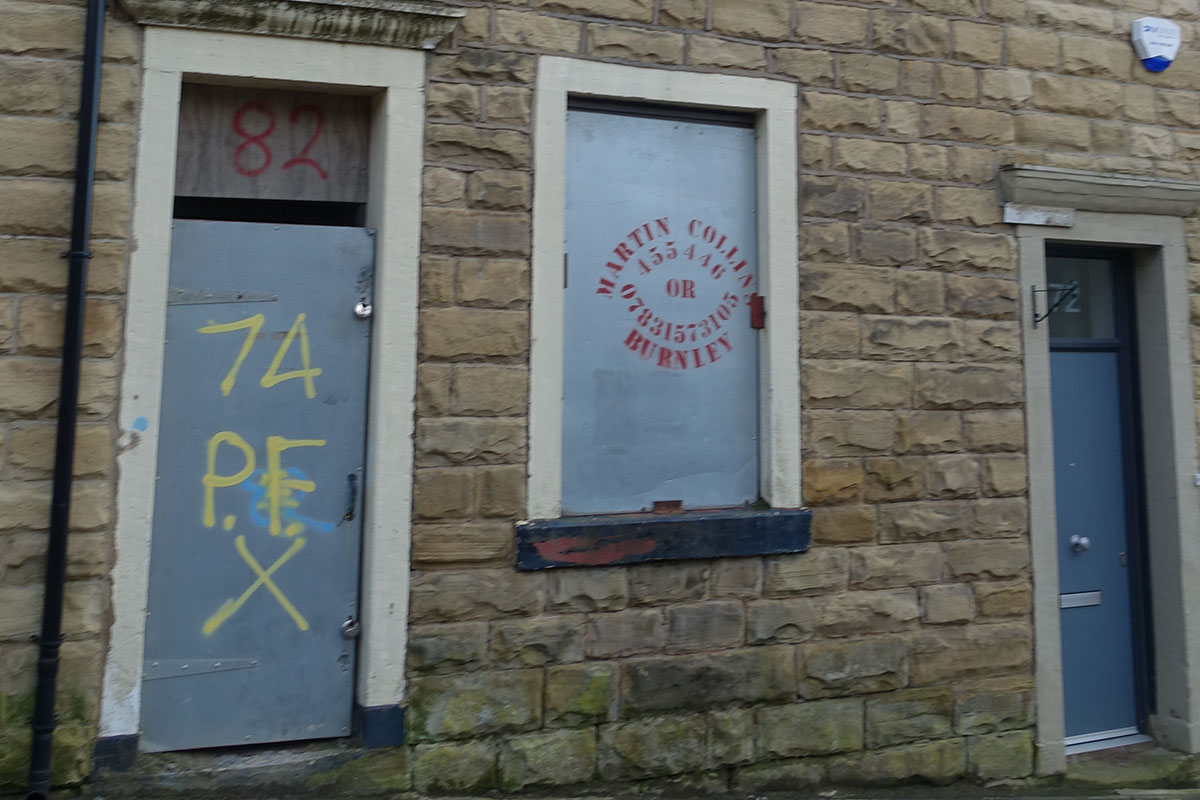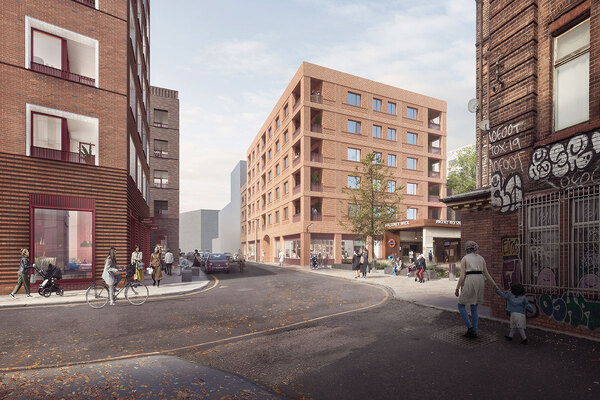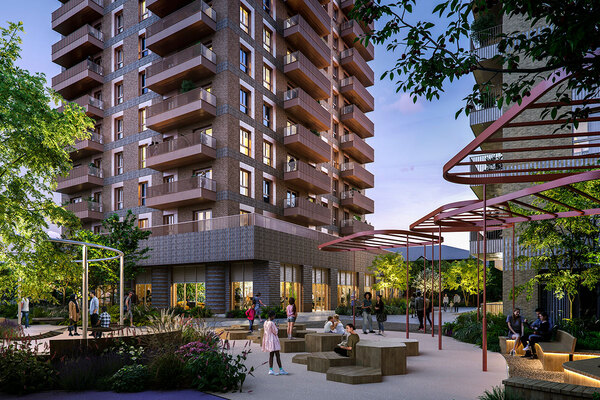How ‘left behind’ Accrington is being turned around
One of the country’s most deprived areas is changing for the better. Gavriel Hollander goes to Woodnook to learn how it is slowly being turned around
This article was originally published on 14th February
If you peer south-east out of Mark Hoyle’s office window at Hyndburn Borough Council in central Accrington, you can see the tightly packed terraced streets of Woodnook.
This cluster of around 900 homes runs directly uphill from the town centre towards Oak Hill Park, where large family houses on wide streets offer spectacular views of the rolling East Lancashire hills. However, Woodnook’s bucolic appearance is at odds with its reputation as a neighbourhood with long-running social and environmental problems.
Mr Hoyle himself is all too familiar with Woodnook’s challenges. As the council’s head of regeneration and housing, he has spent many years working to transform an area that has consistently ranked as one of the most deprived in England.
Inside Housing is in Accrington as part of our series of reports on parts of the country where housing market failures have gone hand in hand with economic decline – areas that the National Housing Federation’s ‘Great Places’ commission referred to last year as “left behind”.
In some ways, Accrington is the epitome of the ‘left behind’ town. Its once strong manufacturing and textile industries faded through the second half of the previous century before dying out completely in the early years of this one. Its direct rail link to Manchester was shut in the 1960s following the Beeching Report, while its famous football team – Accrington Stanley – folded around the same time.
More recently, the relative economic boom taking place in nearby Manchester has sucked jobs and talent from the town. Although unemployment in the borough as a whole was approximately 5.2% in 2017 – lower than in some of its neighbouring authorities and not far off the national rate of 4.1% – much of the available work is low waged and unskilled.
Many of the places identified in the NHF’s report were among the former Labour constituencies across the North that fell to the Conservatives in December’s general election. Accrington, the biggest town in the Hyndburn constituency, had had a Labour MP since 1992 until 24-year-old Sara Britcliffe overturned the 6,000 majority to become the youngest of the new Tory intake.
Easy as it may be for them to be lumped together as a homogenous mass, not all parts of this ‘red wall’ are the same. Nor do they share the same problems. In fact, when it comes to its housing market, the more recent story in Accrington isn’t without hope.
Of course, the area’s negative economic spiral was – once upon a time – reflected in a floundering housing market, Mr Hoyle explains.
“Parts of Hyndburn were characterised by low housing demand,” he says. “That’s to do with the same reasons as other areas: the decline of the major industries. What you’re left with is a housing stock that was built for factory workers going back over 100 years and that was never expected to last 100 years.”
Woodnook is improving, but is still in the bottom 2% of English neighbourhoods
Across Hyndburn, terraced housing still accounts for around 50% of the stock of 37,000 homes. Those tightly packed terraces in areas such as Woodnook did not suit the needs of a changing demographic.
“We had pockets of low demand because we had a surplus of housing stock and those vacancies tended to be concentrated in certain areas,” Mr Hoyle continues. “Where you get clusters of vacant property, it becomes a less desirable place because it gets boarded up.
“It becomes a cycle: people who can choose not to live there don’t. You get very low-income occupiers, people who depend on benefits and so on, and so you get high levels of deprivation. Low-income occupiers don’t have the money to invest in their own properties, so you get this scenario where people are not spending on the housing stock, so it declines visually and environmentally.”
In 2002, the government’s answer to this problem was the Housing Market Renewal (HMR) programme. As part of the wider East Lancashire area, Accrington was selected as one of nine ‘pathfinder’ schemes. In neighbouring west Accrington, this led to some success: a new build community of 217 homes was created and the terraced streets that were not demolished were given much-needed investment.
But in Woodnook, the story is very different. Any demolition plans were shelved in 2010 when the government cut funding for HMR. An alternative needed to be found.
Woodnook itself was known as the borough’s area of highest crime. Mr Hoyle estimates that when HMR funding was pulled, around 30% of properties were vacant, while up to 40% were in a private rented sector characterised by poor standards.
“Anyone who could get out did. Even in 2010, we were acquiring properties for £30,000,” he says.
This is where private developer Placefirst enters the scene. Working in a joint venture with Together Housing and using land sold to it by the council at a nominal fee, Placefirst bought around 300 homes, which it either renovated or remodelled and then let out at market rates.
Martin Ellerby, the developer’s head of new business and innovation, admits that “it was a bit of a shock to the system” when Mr Hoyle first took him round Woodnook in 2011. “But with a bit of vision you could see it had quite a few things going for it.”
Things “going for” Woodnook included its five-minute walking distance to the town centre, a well-rated local primary school and, perhaps most importantly, the recent reopening of a 500-metre rail line known as the Todmorden Curve that created a direct route to Manchester.
While some parts of Woodnook have been remade by Placefirst, houses in other parts remain empty
“The main concern at that point was that we were saying we were going to do this under a private rent model,” recalls Mr Ellerby. “One of the big problems in that area was the private rental sector, because it was offering really poor accommodation to vulnerable people; it was creating a lot of social problems in the area. So some homeowners were nervous, when private rent had caused so much of a problem.”
Today, Woodnook is a mixed area. Placefirst has remade some of the terraces along Augusta Street, Royds Street and Booth Street as larger family homes. Brickwork has been washed, new blinds installed and the place has the feel of a proud new build estate.
However, the same is not true elsewhere. There are still empty properties and some fly-tipping in back alleyways. In 2015, it ranked 474th out of 32,844 English neighbourhoods on the government’s index of multiple deprivation. Although that is an improvement of 373 places on its 2010 position, it is still in the bottom 2%.
Perhaps tellingly, there is little in the way of housing association properties here. Onward Homes is the area’s biggest social landlord and includes the council’s stock transfer association, Hyndburn Homes, as one of its legacy organisations. Its chief executive Bronwen Rapley admits that burdened with high debts in the aftermath of the transfer, there was only so much it could do. “It had a limited business plan, so found it difficult to fund new development or acquisitions,” she says.
Onward has 3,000 homes in Hyndburn and Ms Rapley is adamant that “we’re not going anywhere”. But she also points to the wider role Onward has in rebuilding a community in a place like this.
“The reason why there’s a housing market failure in Accrington is because there’s insufficient employment for the number of people who live there,” she says. “If we’re thinking about what role housing associations play, some of that is about making sure properties are safe and warm and good places to live in. But there’s also a real commitment to doing what we can with our customers and people who aren’t our customers to support them back into employment.”
To that end, Onward has created 50 jobs at its Accrington-based contact centre and also runs its First Call project from one of the town’s shopping centres, providing support for local jobseekers.
Ms Rapley is philosophical about the problem of bringing economic growth to a community with limited resources. “You can either do things to a community or you can do things with a community,” she says.
“When you have funding, sometimes you end up doing things to a community. One of the challenges that comes out of working in a time when there’s less funding is you have to be more creative, you have to operate more small-scale, and you have to think much more about how you enable people to take advantage of whatever opportunities there are.”
Sign up for our daily newsletter
Already have an account? Click here to manage your newsletters
Inside Housing Development Summit 2020
Inside Housing is pleased to join forces with Homes England and the LGA to introduce the Inside Housing Development Summit.
Taking place on 27-28 April 2020, the summit will gather together local authorities, housing associations, developers, fund managers and advisors for a Chatham House style event focussed on making new connections and exploring new delivery models.
The summit will take place over 28 hours, starting with an afternoon plenary on 27 April, an exclusive development site study tour to Northstowe, England's largest new town since Milton Keynes, followed by a business dinner.
The second day will provide opportunities to network with a range of senior Homes England and LGA staff including Nick Walkley, chief executive of Homes England and Mark Lloyd, chief executive of LGA.
You’ll also meet with leaders from across the development ecosystem and take part in group discussions to help you connect and explore new opportunities. All accommodation and meals will be provided within the fee.
Places for each stakeholder group are limited to ensure a balanced mix of participants and to make sure you leave with the relationships and leads you need.
Click here to book your place or for more information
